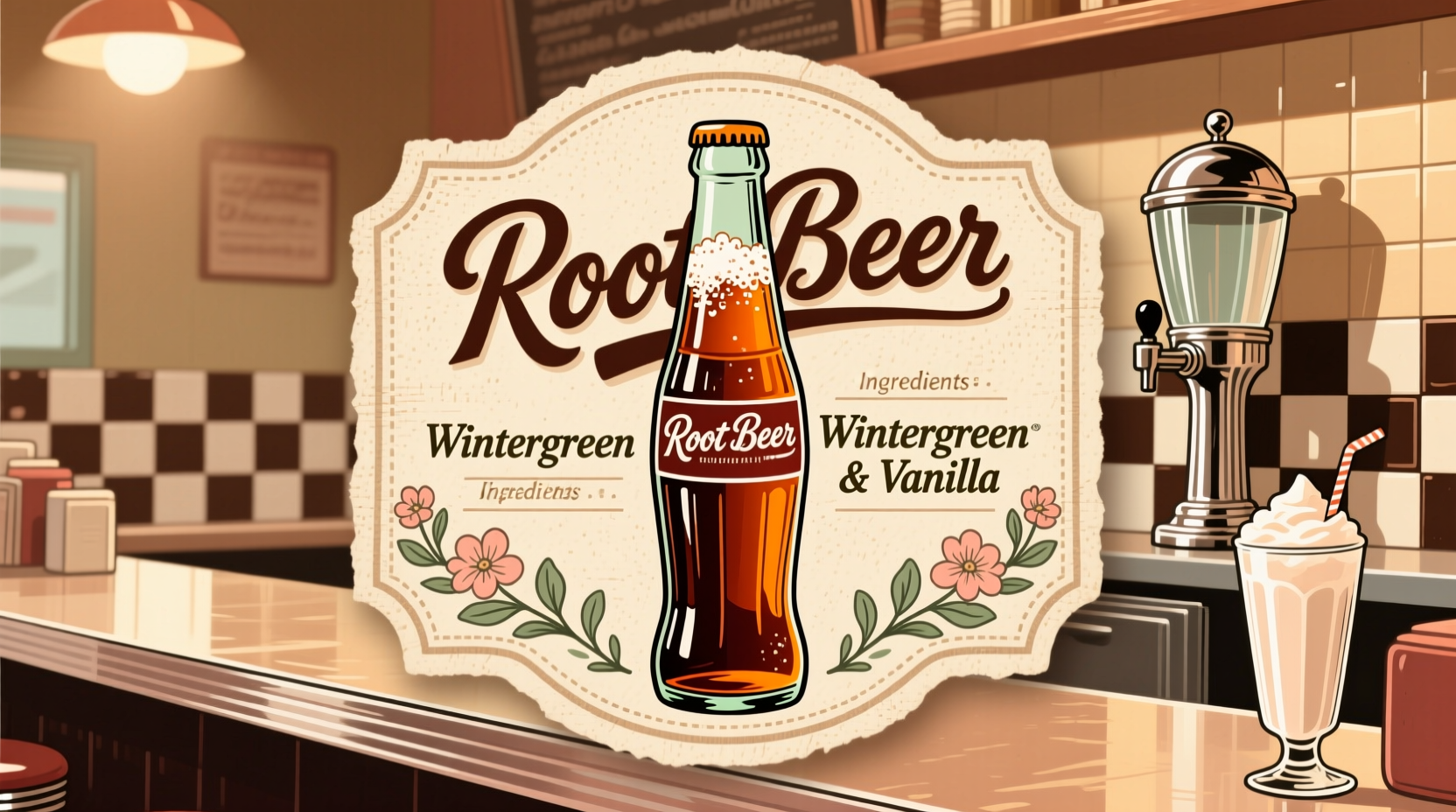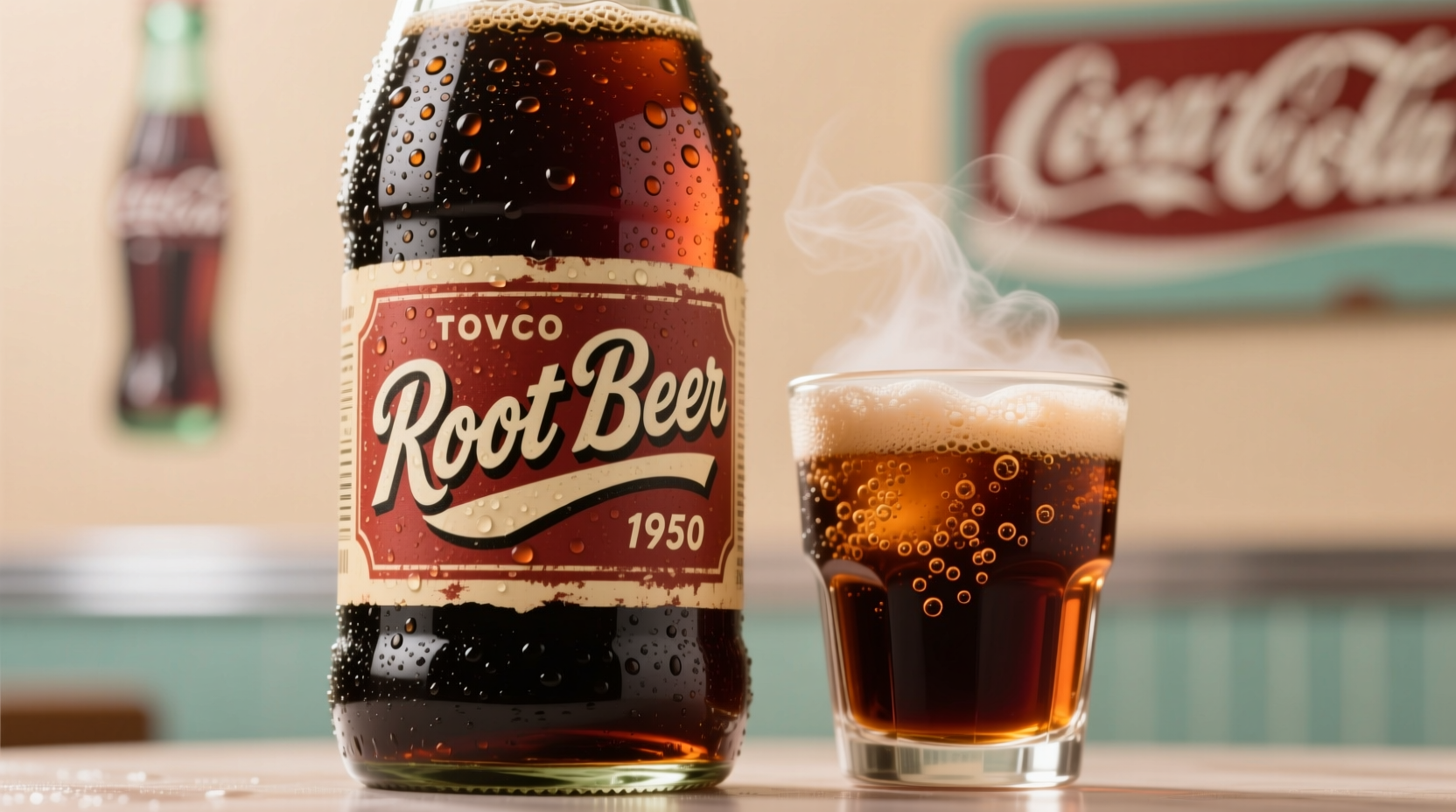Discover exactly what gives root beer its unique taste profile and why this beloved soda has captivated palates for generations. In this comprehensive guide, you'll learn the precise flavor components, historical evolution, and what to look for in quality root beer — whether you're a curious consumer or a flavor enthusiast.
The Core Flavor Profile: What Makes Root Beer Taste Like Root Beer?
Root beer's signature taste isn't derived from a single ingredient but from a carefully balanced blend that creates its unmistakable character. Unlike cola or lemon-lime sodas with dominant single-note profiles, root beer offers a complex symphony of flavors that work in harmony.
Modern root beer primarily features wintergreen as the dominant flavor note, providing that characteristic cool, minty-spicy sensation. This is complemented by licorice root or anise for subtle sweetness with a hint of earthiness, and vanilla for creamy smoothness that rounds out the profile. Additional elements like sarsaparilla, birch bark, and cassia bark contribute deeper herbal and woody notes that create root beer's distinctive depth.
| Primary Flavor Component | Flavor Contribution | Common Sources |
|---|---|---|
| Wintergreen | Cool, minty-spicy base note | Synthetic methyl salicylate, wintergreen oil |
| Vanilla | Creamy sweetness, smooth finish | Vanilla extract, synthetic vanillin |
| Anise/Licorice | Subtle sweetness with herbal undertones | Anise seed, star anise, licorice root |
| Sarsaparilla | Earthy, woody depth | Sarsaparilla root extract |
Why Root Beer Doesn't Actually Taste Like Roots (Anymore)
Despite its name, modern root beer contains no actual beer (it's non-alcoholic) and rarely includes genuine roots in significant quantities. The name originates from its historical formulation as a medicinal "root tea" made from various plant roots.
The critical turning point came in 1960 when the U.S. Food and Drug Administration banned sassafras oil—the traditional base for root beer—due to concerns about safrole, a compound found in sassafras that showed carcinogenic properties in animal studies (FDA, 1960). This regulatory change forced manufacturers to develop new flavor formulations that mimicked the traditional profile without using actual sassafras root.

Root Beer Flavor Evolution Timeline
Understanding how root beer's flavor has transformed over time explains why modern versions taste different from historical recipes:
- Pre-1800s: Medicinal "root teas" made from sassafras, sarsaparilla, and other local roots consumed for purported health benefits
- 1875: Charles Hires commercializes root beer as a non-alcoholic beverage, using sassafras as the primary flavoring
- Early 1900s: Prohibition era boosts root beer's popularity as a "temperance drink" with complex flavor profile
- 1960: FDA bans sassafras oil due to safrole concerns, forcing flavor reformulation
- 1970s-Present: Development of artificial flavorings that mimic traditional profile without banned ingredients
Brand Variations: How Flavor Profiles Differ
Not all root beers taste the same. Major brands have distinct flavor profiles that appeal to different palates:
- A&W Root Beer: Emphasizes vanilla and caramel notes with moderate wintergreen presence
- Barq's: Features stronger wintergreen and licorice notes with less vanilla
- Sioux City: Bold, traditional profile with pronounced sarsaparilla and wintergreen
- Craft Root Beers: Often incorporate additional botanicals like dandelion, burdock, or hops for complexity
These variations demonstrate how the same basic flavor framework can be adjusted to create distinctive products that appeal to different consumer preferences. The most successful formulations maintain the essential sweet-spicy balance while adding unique character through subtle ingredient adjustments.
Identifying Quality Root Beer: What to Look For
When selecting root beer, pay attention to these indicators of quality flavor formulation:
- Balance: The best root beers achieve harmony between sweet, spicy, and herbal elements without any single note dominating
- Complexity: Look for layered flavors that evolve as you drink, rather than a single flat note
- Aftertaste: Quality root beer leaves a pleasant, lingering finish rather than an artificial chemical aftertaste
- Ingredient Transparency: Craft brands often list specific botanicals rather than vague "natural flavors"
Understanding these elements helps you appreciate the craftsmanship behind quality root beer and make informed choices based on your flavor preferences. Whether you prefer the classic profile of traditional brands or the innovative approaches of craft producers, knowing what creates root beer's distinctive taste enhances your enjoyment.











 浙公网安备
33010002000092号
浙公网安备
33010002000092号 浙B2-20120091-4
浙B2-20120091-4